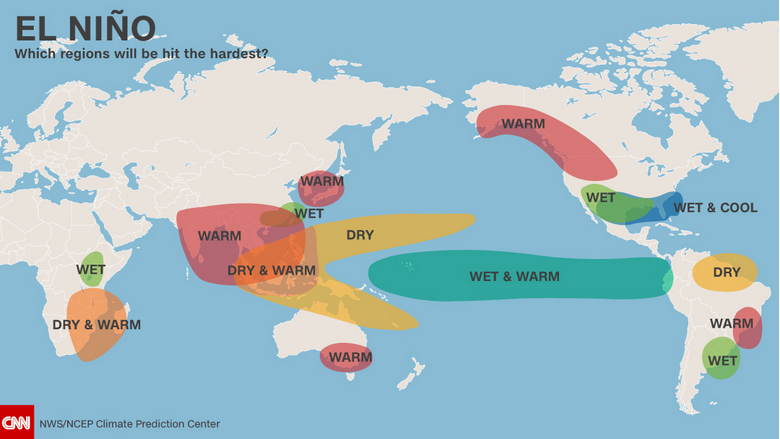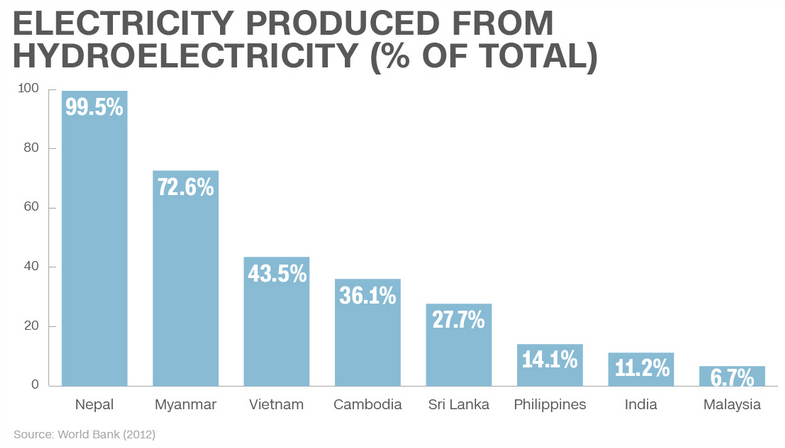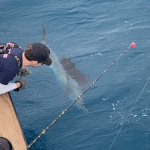Article Courtesy: cnn.com | By Ancha Srinivasan | Originally published Aug 17, 2015 | Please click here for original article.
This year we have seen a succession of unusual weather events across Asia: Deadly heat waves in India and Pakistan, widespread drought in Cambodia, Indonesia, and Vietnam, and planned water rationing in Thailand.
Climate scientists have confirmed that these are all likely results of an emerging period of El Niño, a periodic weather event characterized by warming ocean temperatures. Already, 2015 has been the hottest year ever recorded.
While the effects of El Niño are global and widespread, it hits Asian countries the hardest. Drought becomes a more common occurrence, leading to energy, food and water insecurity.
With El Niño expected to last well into 2016, Asian countries need to take measures to mitigate its impact — especially for the poor.
Drought hits water supplies
One of the most serious effects of El Niño is water scarcity. Hydropower provides 30% of Vietnam’s and 70% of Myanmar’s energy production, while Nepal relies 100% on hydropower for its energy needs. But energy output declines as water levels fall in drought conditions, making countries dependent on hydropower vulnerable to electricity cuts as power plants are forced to shut down, as was the case in Thailand, Vietnam and the Philippines in recent weeks. Less hydropower means countries purchase more fossil fuels, driving up import bills, fueling inflation, and increasing pollution.
Moreover, drought conditions and rising temperatures have major implications for food production. Temperature rises of just 1°C reduces rice yields by as much as 10%. Likewise, delayed monsoons can disrupt harvests — an occurrence we’ve already seen in the Indian subcontinent and in the Philippines.
Thailand’s vital rice belt is currently being battered by one of the worst droughts in living memory forcing impoverished farmers deeper into debt. Economic forecasts for the country have been lowered as a result and Indonesia and the Philippines may follow suit.
Where are the fish?
Likewise, El Niño’s effects on fisheries can be severe. As ocean temperatures rise, fish go deep or migrate, leaving fishing communities without livelihoods. Vulnerable countries in the Pacific, like Kiribati and Marshall Islands, where fisheries contribute as much as 55% of national GDP, will be hardest hit. Cambodia, Myanmar and Vietnam are also expected to suffer as fisheries account for up to 8 to 10% of GDP and are a major source of employment.
In addition to the impact on food production itself, food scarcity also translates into higher inflation as governments import more food and people begin to stockpile. While inflation hurts everyone, it has a particularly large impact on the poor.
During the last El Niño in 2010, prices of staple foods like rice rose as much as 45%. Moreover, the impact of El Niño on government balance sheets affects the policy options available to address these issues. With rising import bills for energy and food, governments may have to cut back on popular programs in order to balance their books.
In the most extreme cases, we have seen how this can lead to social unrest and political instability. Researchers at Columbia University have found that the risk of civil conflict doubles during El Niño cycles.
What can be done?
Given the particularly hard impact El Niño has on the poor, one of the first steps the region needs is to better manage its food stocks. One initiative governments should consider is to revive regional food reserve systems.
Food reserve systems were proposed in Southeast Asia after the last food security crisis in the late 1990s, but countries lost interest after the crisis passed. Countries across the region should reconsider these and other arrangements that improve information flows and reduce hoarding.
Improved water conservation and management are critical to lessen the impacts of El Niño. Governments should better protect and manage watersheds, while encouraging farmers to plant more drought resistant crop varieties and diversify from water-intensive crops.







